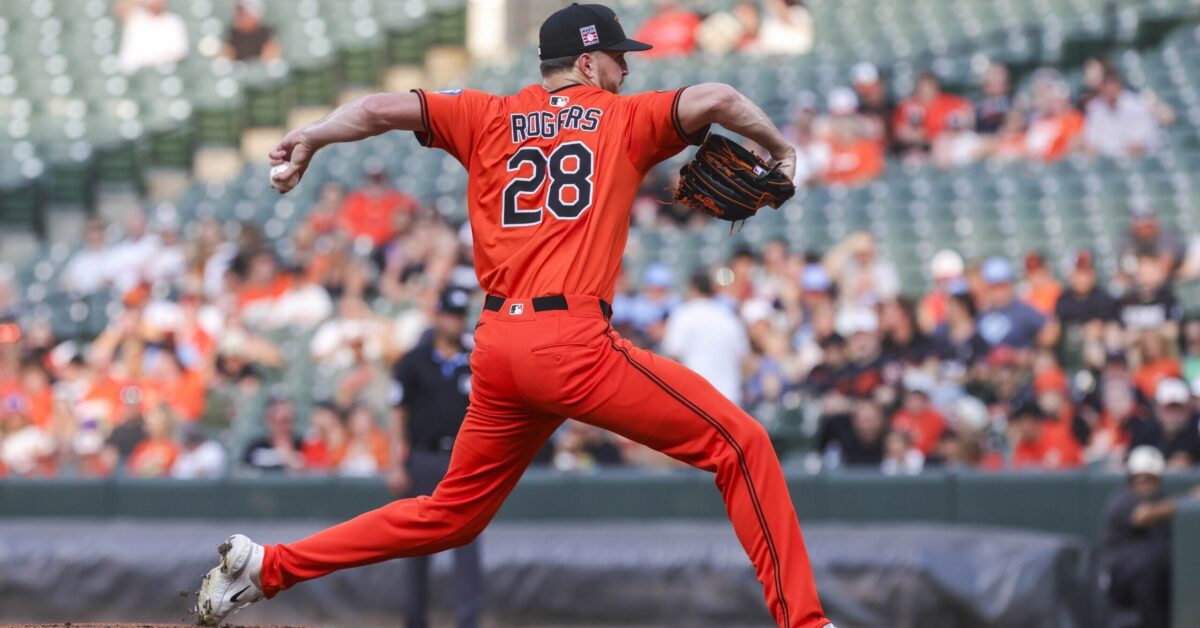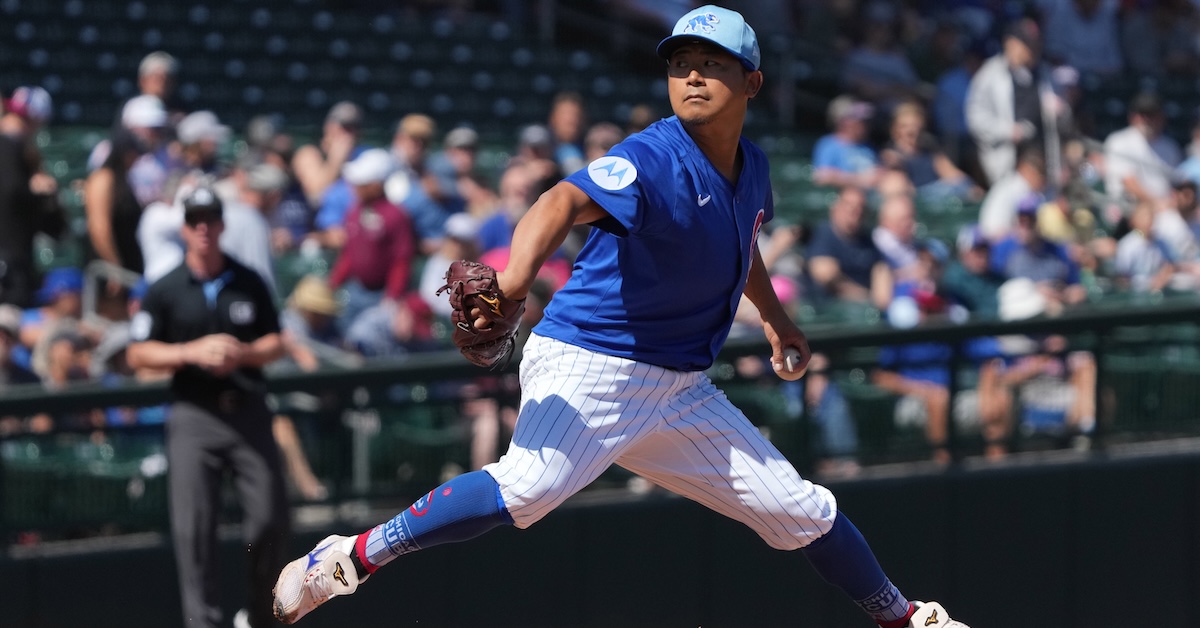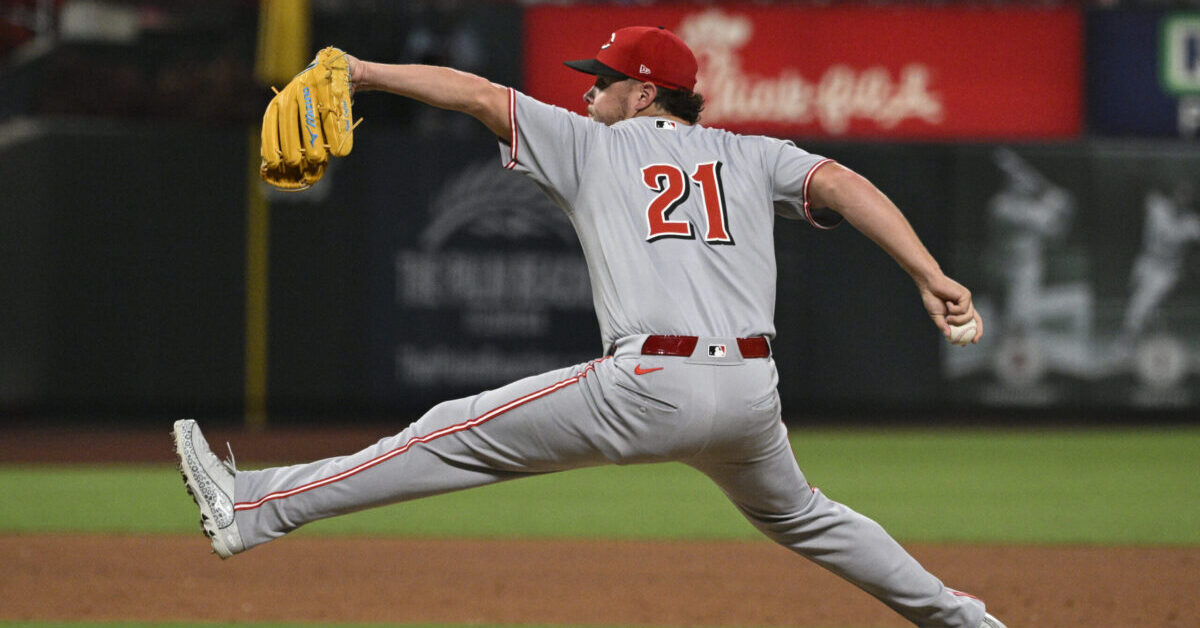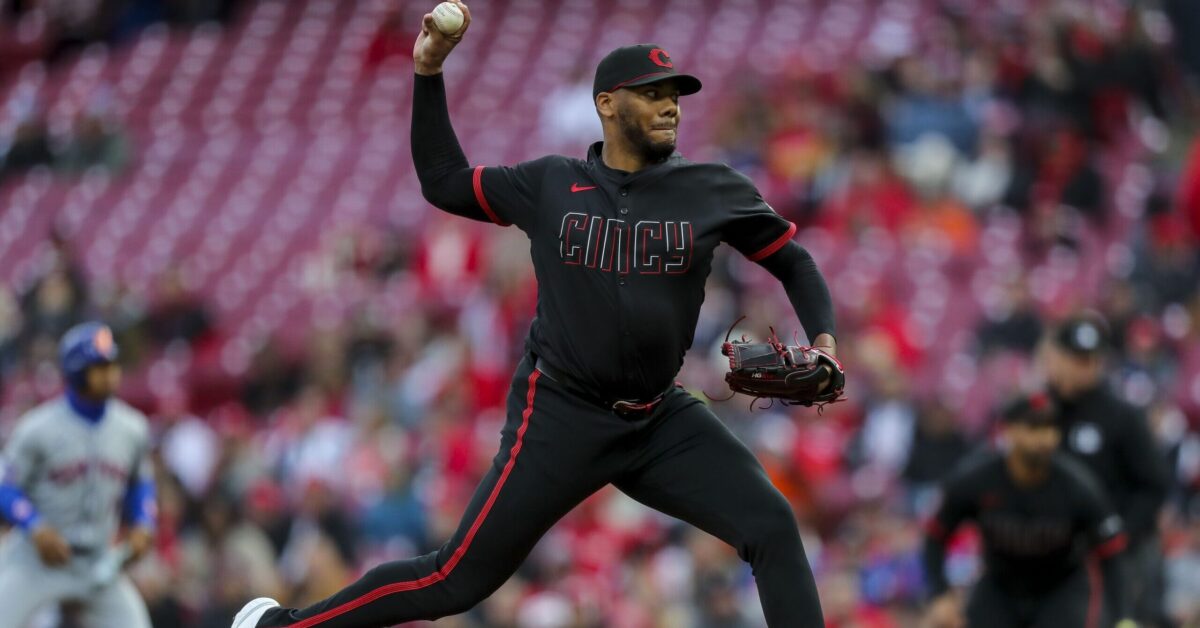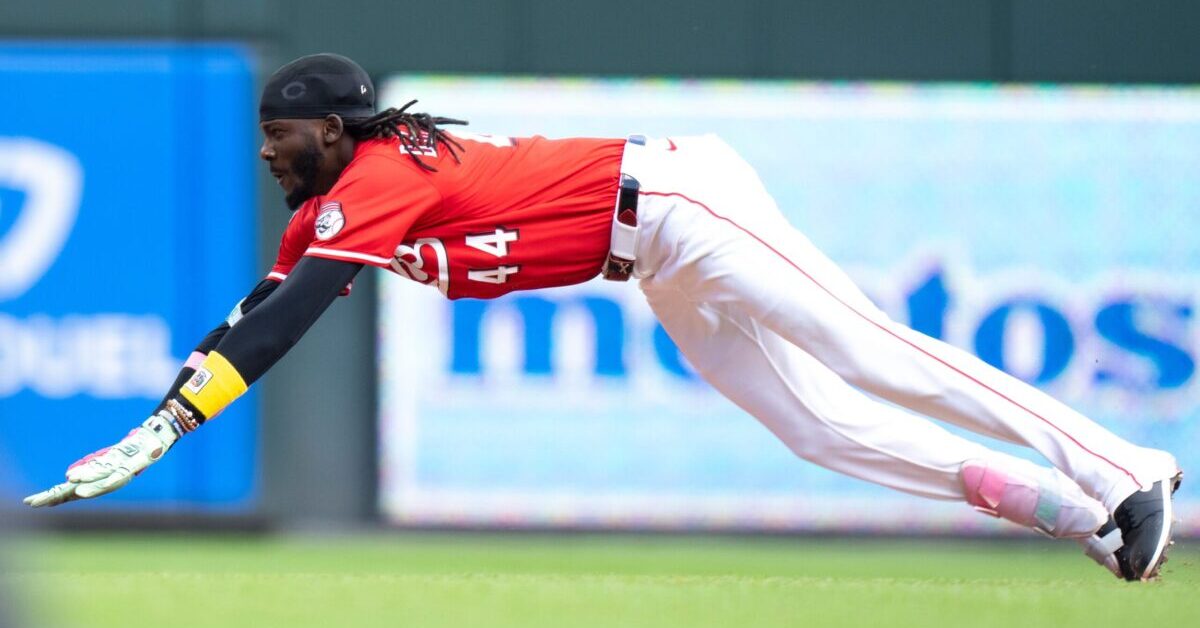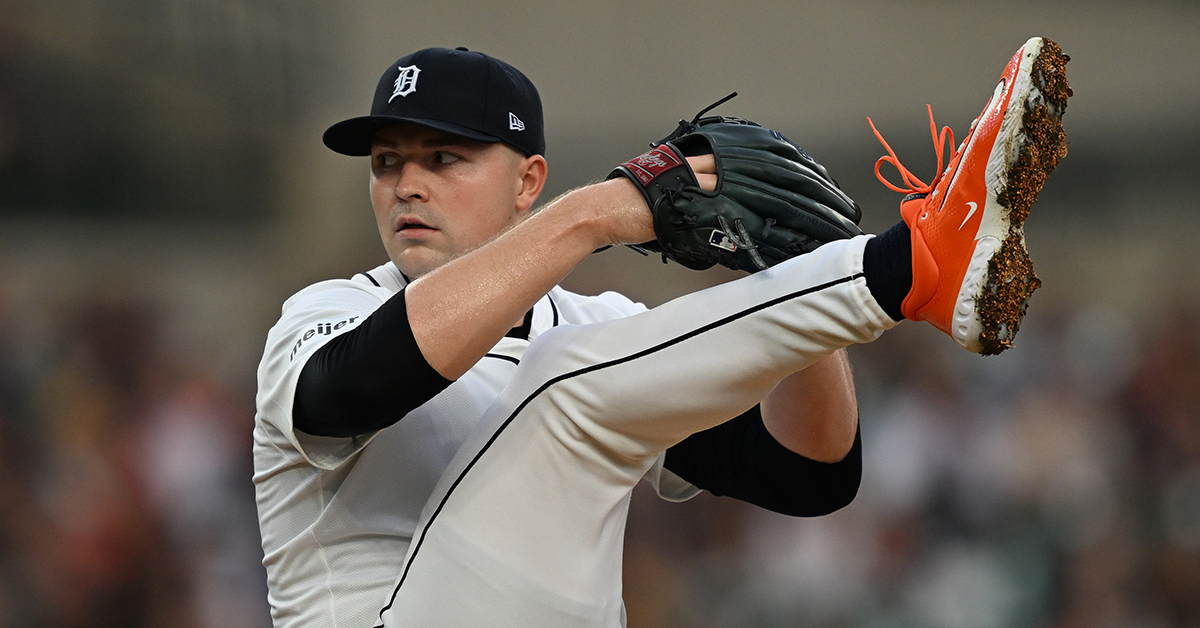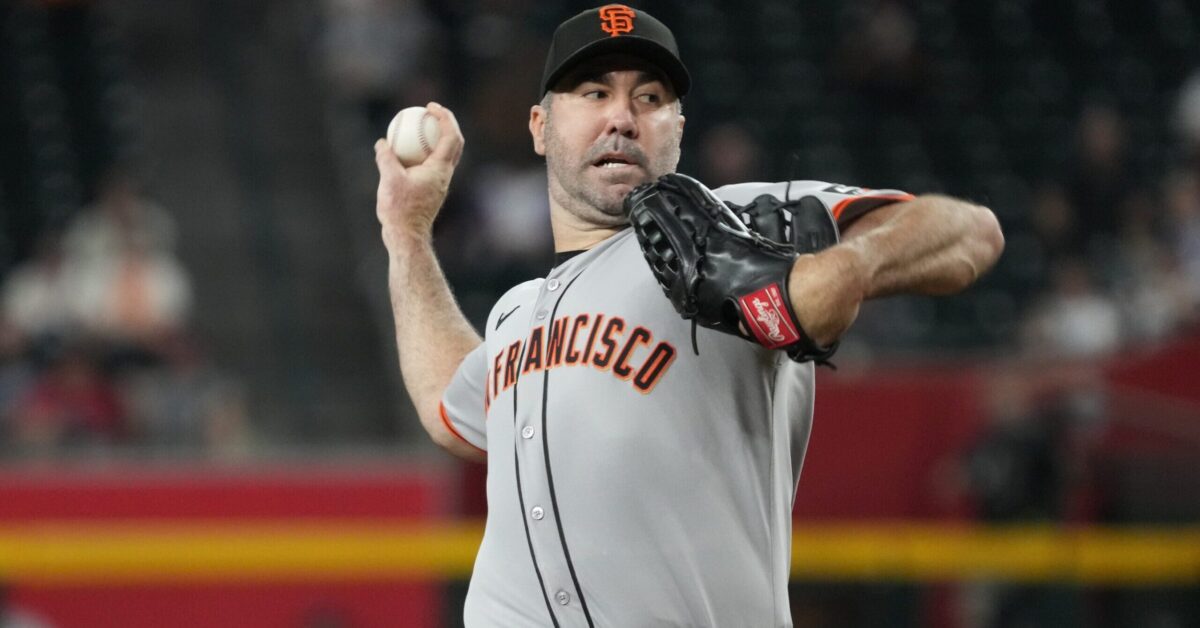
Denny Medley-Imagn Images
In the article, I cover the players using CBS’s (about 40% or less initial roster rate) and Yahoo’s ADD/DROP rates. Both hosting sites have the option for daily and weekly waiver wire adds. CBS uses a weekly change while Yahoo looks at the last 24 hours. Yahoo is a great snapshot of right now, while CBS ensures hot targets from early in the week aren’t missed. The players are ordered for redraft leagues by my rest-of-season preference, grouped by starters, relievers, and hitters.
Batters
Sal Stewart: He hit 4 HR in 48 PA since being promoted and started in eight of the last 10 games.
Harrison Bader: Leading off every day for the Phillies.
Daylen Lile: Batting cleanup every game with 6 HR, 8 SB, and .286 AVG in 326 PA.
Austin Martin: Starting and batting second. He has a .295 AVG and 9 SB in 151 PA.
Caleb Durbin: Started in 14 straight games with a .741 OPS on the season.
Romy Gonzalez: Starting some against righties with seven starts in the last 10 games. A .749 OPS in August.
Jake Burger: Started only three times in the last five games. Batting .229/.255/.521 since coming off the IL.
Zach Cole: Six starts in the last seven games. Batting .273/.360/.545 with 2 HR (36% K%, .364 BABIP).
J.P. Crawford: Batting ninth but playing every game. Normal season for him with a .268 AVG, 11 HR, and 8 SB.
Jared Triolo: Qualified at all four infield positions while batting .226/.318/.351 with 6 HR and 12 SB in 340 PA.
Ha-Seong Kim 김하성: Since joining the Braves, he has been productive (.316/.375/.439) but with 0 SB.
Chase Meidroth: In the second half, he’s batting .306/.363/.414 with just 2 SB.
Dominic Canzone: Strong-side platoon bat who is hitting .400/.441/.733 in September.
Jake Mangum: Only three starts in the last seven games, but a nice source of stolen bases (26 SB).
Mickey Moniak: Colorado will be on the road next week (at SEA, at SF). Hopefully, there are better options.
Brandon Marsh: Eight starts in the last 10 games with middling overall numbers (11 HR, 6 SB, .283 AVG).
Carlos Cortes: Just four starts in seven games, but 4 HR in 82 PA.
Kody Clemens: Even with a September .923 OPS, he started seven of the last 10 games.
Josh Bell: Just seven starts in the last 10 games. Not good enough to be fantasy relevant if not playing.
Thomas Saggese: Starting every game at shortstop but not much else (2 HR, 3 SB, .266 AVG in 261 PA).
Bryce Eldridge: Strong-side platoon bat with major contact issues (50% K%, 54% Contact%). Of the 626 batters with 10 PA, Eldridge’s Contact% is the fourth lowest.
Otto Kemp: Now irrelevant with Alec Bohm off the IL.
Catchers
Carter Jensen: Six straight starts with three of the games coming as the DH. So far, he has a 1.135 OPS with 2 HR.
Gabriel Moreno: Solid source of batting average (.285 AVG) with a little more power and contact this season.
Moisés Ballesteros: Started at DH in seven of the last eight games. Solid bat with 2 HR and a .286 AVG.
Tyler Stephenson: While he provides some power (11 HR), an increase in his strikeout rate means a .223 AVG.
Patrick Bailey: Started hitting for power in September (4 HR, .255 ISO). His season-long stats are almost identical for previous seasons.
CBS Hitter Rostership Rates
| Name |
Previous Roster% |
Current Roster% |
Change |
| Mickey Moniak RF COL |
40% |
47% |
7% |
| Caleb Durbin 3B MIL |
39% |
45% |
6% |
| Jake Burger 1B TEX |
38% |
41% |
3% |
| J.P. Crawford SS SEA |
36% |
38% |
2% |
| Gabriel Moreno C ARI |
34% |
40% |
6% |
| Tyler Stephenson C CIN |
34% |
35% |
1% |
| Harrison Bader CF PHI |
30% |
40% |
10% |
| Sal Stewart 1B CIN |
25% |
31% |
6% |
| Daylen Lile RF WAS |
23% |
32% |
9% |
| Bryce Eldridge 1B SF |
23% |
27% |
4% |
| Romy Gonzalez 1B BOS |
22% |
23% |
1% |
| Ha-seong Kim SS ATL |
19% |
22% |
3% |
| Jake Mangum LF TB |
19% |
20% |
1% |
| Jared Triolo SS PIT |
18% |
19% |
1% |
| Chase Meidroth SS CHW |
16% |
18% |
2% |
| Josh Bell DH WAS |
15% |
17% |
2% |
| Brandon Marsh CF PHI |
13% |
17% |
4% |
| Moises Ballesteros DH CHC |
12% |
15% |
3% |
| Patrick Bailey C SF |
10% |
14% |
4% |
| Kody Clemens 1B MIN |
9% |
13% |
4% |
| Carter Jensen DH KC |
6% |
8% |
2% |
| Otto Kemp 3B PHI |
5% |
9% |
4% |
| Dominic Canzone RF SEA |
4% |
6% |
2% |
| Thomas Saggese 2B STL |
4% |
6% |
2% |
| Austin Martin LF MIN |
3% |
5% |
2% |
| Zach Cole RF HOU |
2% |
6% |
4% |
| Carlos Cortes RF ATH |
0% |
2% |
2% |
Starters (Team and day of expected start in parentheses)
Trey Yesavage (vs TB, TB): Besides going deep into the game (69 pitches last game), he needs to be added to see if he can repeat his debut (9 K, 2 BB, 1 ER, 5 IP), which was also against the Rays.
Connelly Early (vs DET, Fri): My only worry is that he won’t go five innings for a Win; otherwise, solid add.
Michael McGreevy (at SF, at CHC, Mon, Sun): The two starts are going to get everyone’s attention. While he won’t get many strikeouts, he’s a solid add.
Jason Alexander (at LAA, Friday): Anybody against the Angels is a must start, especially a 4.00 ERA talent.
Ryan Weathers (at PHI, vs NYM, Tues, Sun): Since coming off the IL, he has a 3.68 xFIP while facing the Rockies and Nationals. A chance some fantasy managers need to take, but it could be a ratios explosion.
Stephen Kolek (at LAA, Wed): Easy matchup and has seen his groundballs up and strikeouts down since joining the Royals.
Simeon Woods Richardson (at PHI, Sat): Since being recalled, he upped his splitter (18% SwStr%, 46% GB%) usage to 24% after not throwing the pitch to start the season. Putting a value on him is tough with Sunday’s start (vs CLE) determining his value and/or cost. He could easily be three spots higher or lower, depending on how I feel at the moment.
Chad Patrick (vs CIN, Sat): Solid matchup for a solid arm.
Patrick Corbin (at CLE, Fri): I could see adding the low-4.00’s ERA talent.
Tyler Wells (vs TB, Wed): One of several 4.00 ERA talents with reasonable matchups.
Joey Cantillo (vs TEX, Sat): He has his place in bid lists, but he won’t be the top choice. A fallback option for teams low on FAAB. His 1.30 WHIP (4.2 BB/9) could be a determinant for teams fighting in the category.
Eduardo Rodriguez (at SD, Fri): He’s struggled with walks and hits this season, posting a 1.56 WHIP with no late season changes. Stay away.
CBS Starting Pitcher Rostership Rates
| Name |
Previous Roster% |
Current Roster% |
Change |
| Eduardo Rodriguez SP ARI |
35% |
37% |
2% |
| Patrick Corbin SP TEX |
34% |
35% |
1% |
| Connelly Early SP BOS |
30% |
50% |
20% |
| Michael McGreevy SP STL |
27% |
30% |
3% |
| Jason Alexander SP HOU |
26% |
32% |
6% |
| Ryan Weathers SP MIA |
26% |
27% |
1% |
| Joey Cantillo RP CLE |
19% |
29% |
10% |
| Chad Patrick SP MIL |
14% |
15% |
1% |
| Trey Yesavage SP TOR |
13% |
33% |
20% |
| Simeon Woods Richardson SP MIN |
12% |
15% |
3% |
| Tyler Wells SP BAL |
11% |
17% |
6% |
| Stephen Kolek SP KC |
9% |
11% |
2% |
Small Sample Starting Pitcher Stats
| Name |
IP |
BotERA |
Pitching+ERA |
SwStr% ERA |
FBv ERA |
SIERA |
xFIP |
AVG |
| Connelly Early |
10.1 |
2.90 |
3.19 |
2.35 |
4.06 |
1.59 |
1.44 |
2.59 |
| Trey Yesavage |
5.0 |
4.08 |
3.94 |
0.21 |
3.94 |
2.17 |
1.36 |
2.62 |
| Simeon Woods Richardson |
11.0 |
4.29 |
4.75 |
3.09 |
4.14 |
2.57 |
2.54 |
3.56 |
| Ryan Weathers |
9.0 |
3.92 |
3.83 |
3.56 |
3.73 |
3.97 |
3.68 |
3.78 |
| Patrick Corbin |
11.0 |
3.66 |
4.13 |
3.39 |
4.22 |
3.93 |
3.55 |
3.81 |
| Chad Patrick |
6.1 |
5.27 |
4.41 |
4.70 |
3.98 |
2.76 |
2.38 |
3.92 |
| Tyler Wells |
12.2 |
4.29 |
4.23 |
3.41 |
4.17 |
3.62 |
3.87 |
3.93 |
| Stephen Kolek |
21.0 |
4.22 |
4.35 |
4.49 |
4.03 |
3.56 |
3.22 |
3.98 |
| Joey Cantillo |
13.0 |
3.85 |
4.08 |
3.97 |
4.21 |
4.39 |
4.03 |
4.09 |
| Eduardo Rodriguez |
11.1 |
3.79 |
4.09 |
4.10 |
4.29 |
4.48 |
4.02 |
4.13 |
| Michael McGreevy |
13.0 |
4.51 |
4.01 |
4.98 |
4.20 |
3.86 |
3.72 |
4.21 |
| Jason Alexander |
11.2 |
4.46 |
4.67 |
4.47 |
4.49 |
3.94 |
3.61 |
4.27 |
Relievers: Saves-based ranks
Shawn Armstrong: Good reliever who is the closer.
Jordan Leasure: Good reliever, but may be now sharing the closer’s role.
Keegan Akin: Average reliever who is the closer (last three Saves).
Riley O’Brien: Good reliever who might be the closer (last two Saves).
Andrew Kittredge: Good reliever who is sharing the closer duties.
Brad Keller: Good reliever who is sharing the closer duties.
Phil Maton: Good reliever who is a step or two from closing.
CBS Relief Pitcher Rostership Rates
| Name |
Previous Roster% |
Current Roster% |
Change |
| Shawn Armstrong RP TEX |
23% |
31% |
8% |
| Andrew Kittredge RP CHC |
12% |
25% |
13% |
| Jordan Leasure RP CHW |
12% |
13% |
1% |
| Keegan Akin RP BAL |
11% |
12% |
1% |
| Phil Maton RP TEX |
10% |
11% |
1% |
| Riley O’Brien RP STL |
6% |
7% |
1% |
| Brad Keller RP CHC |
NA |
19% |
NA |
